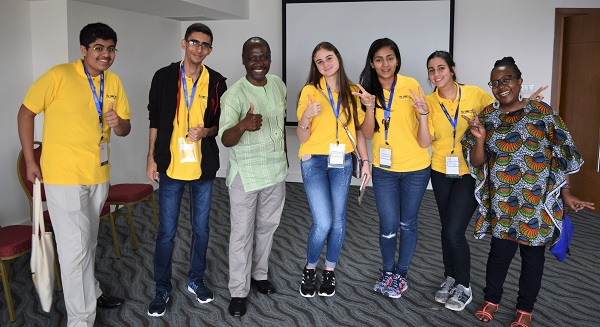
In every language, in every country, there is a word or phrase meaning ’Peace’
Paz. Ukuthula. Shalom. Paix. Amani. Heiwa. Salām. Śānti. Salaamata. Pace. Amahoro. Friede. Hépíng
Though the words are as many as there are people groups and nations, peace carries with it the same positive meaning. Peace denotes wellbeing, wholeness, harmony, serenity, safety, security, freedom, hope, happiness and other wholesome attributes. Positive peace also paves the way for sustainable development and its resultant benefits, including: quality education, healthcare, food security, access to safe water and sanitation, secure livelihoods, gender equality and respect for human rights. All these provide a conducive environment to end child poverty.
It is safe to say that almost everyone understands and desires positive peace, but not everyone has the opportunity to live in such peace. When there is lack of positive peace, children are the greatest victims and most vulnerable to suffer rights violations.
Our world today has multiple scenarios of war, violent conflicts, poverty, violence against children and corruption. These are just some of the hostile societal factors that steal peace from children, their families and their communities. More than that, the invisible detractors of fear, hatred, greed and ignorance, eat away at the inner peace within the heart of the child and their community.
What is more concerning is the immense damaging effects that lack of positive peace is having on children. Lack of peace adversely affects them now, in their childhood; and these effects are likely to linger on to their future as adults, if the right interventions are not mitigated. Beyond the direct threat to their life, physical health and inner wellbeing; children living amidst violent conflicts are more likely to miss out on school. They face hunger, loss of stability, their homes and their communities. Sexual exploitation and abuse of children is rampant in conflict situations.
How does the absence (lack) of positive peace look like around the globe?
Children are directly affected by war and violence conflicts, through loss of their lives and those of their loved ones life, injury, and experiencing psychosocial trauma
Children as recruited as soldiers, messengers, spies and servants, and they are also exploited for sex, by armed groups
Children are forcibly displaced from their homes, resulting in an unprecedented number of children on the move either internally dipalced persons, refugees or migrants.
Children experience other related forms of violence against them, including sexual and gender based violence
At A Glance:
Nearly 1 in 6 children live in countries experiencing violent conflicts across the world. This includes active conflict situations in Afghanistan, Central Africa Republic, Democratic Republic of Congo, Israel, Mali, Myanmar, Nigeria, Palestine, Syria, South Sudan, Somalia, Ukraine and Yemen.
More than 29,000 boys and girls have been abducted or recruited to join armed groups in the last 5 years. These children are used as fighters, informants, looters, messengers, domestic workers and sex slaves.
Over half of the world’s refugees are children. The children are displaced from their homes due to armed conflict, violent extremism, gang violence, organized crime, and other forms of violence and persecution.
An estimated 50 million children are on the move – migrating or forcibly displaced – in our world today. Poverty, violence, natural disasters, discrimination, and family ties, are some of the key push and pull factors driving child migration. In recent years, the number of children migrating unaccompanied by adults, such as parents or guardians, has increased.
Children are affected by violent conflict beyond the physical wounds. They also often experience fear, anxiety, depression, and may become desensitized to acts of violence. These inner wounds, if not addressed in a healthy manner, can adversely influence their adulthood.
Source: Arigatou International, Child Soldiers International, Save the Children, Terre des Hommes, UNHCR, UNICEF, War Child Holland
What can we do to build positive peace?
Build awareness and knowledge
Empower young people – children and youth – for action towards peace
Advocate for social and policy change at grassroots, national and global levels
Use existing frameworks and policies (e.g. CRC and SDGs) to engage and design deliberate responses in peacebuilidng and conflict transformation
Activate our faith-based resources, including the spiritual, social, moral and material assets,
Our Response
Through our Regional Peace Programme, we have established and expanded initiatives that promote peace, conflict transformation while addressing the root causes of poverty, such as corruption, poor governance and violence. Our primary tool in doing this has been fostering interfaith dialogue, interfaith cooperation and facilitating peace education.
In the reporting year for example, through the Regional Peace Programme, we reached up to 800 children and youth in 7 countries – Ethiopia, Kenya, Tanzania, Somalia, South Sudan, Sudan and Uganda.
The Regional Peace Programme covers the Great Lakes and East Africa Regional countries including: Burundi, Djibouti, Democratic Republic of Congo, Ethiopia, Eritrea, Kenya, Rwanda, Somalia, South Sudan, Sudan, Tanzania and Uganda.


